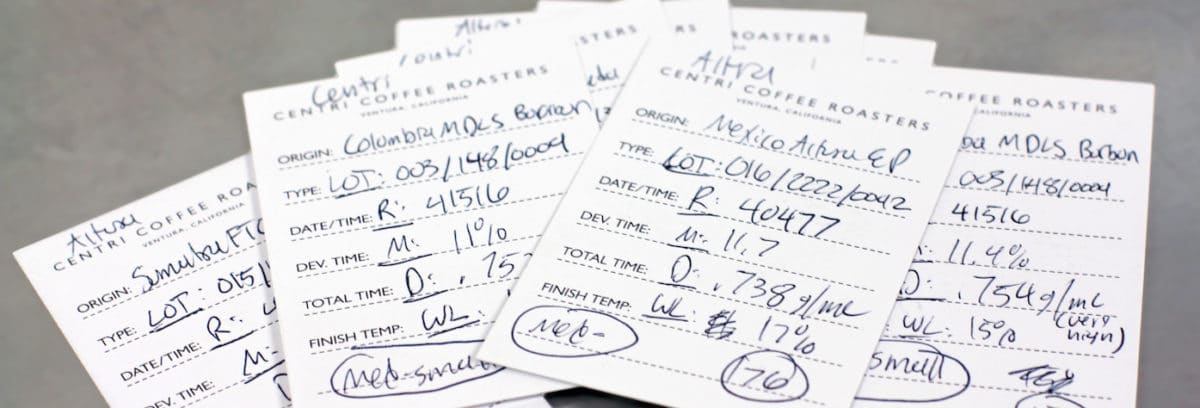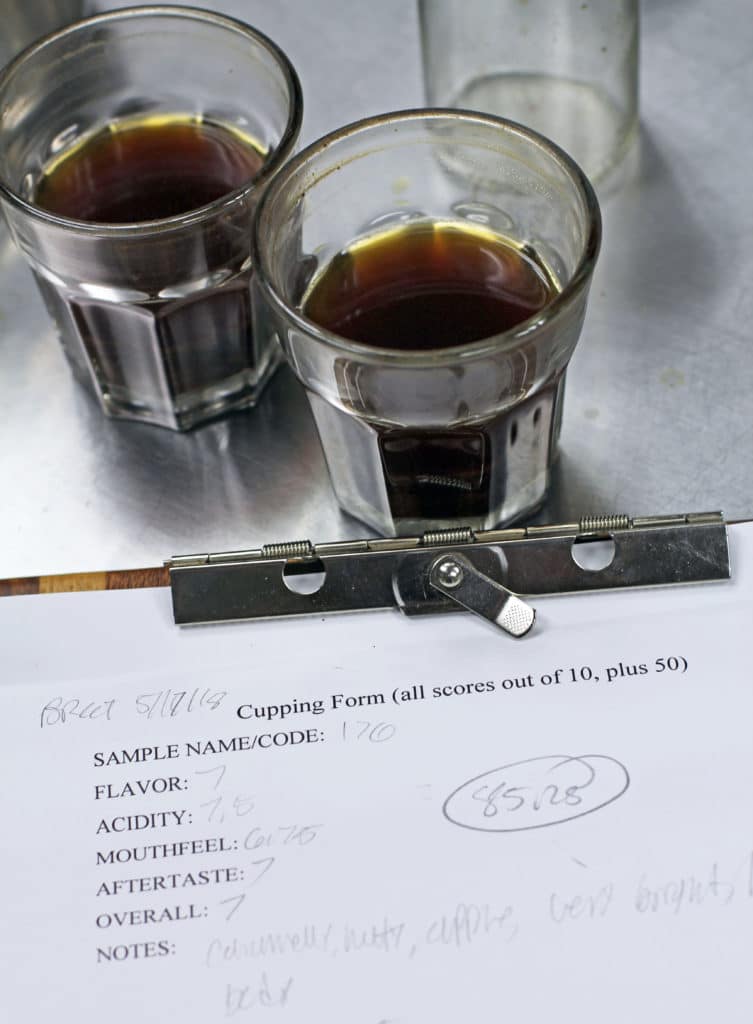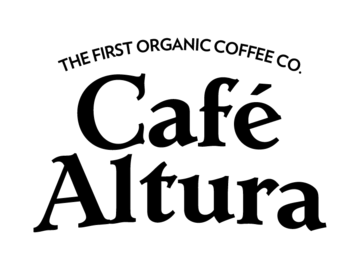
Cupping and Scoring Coffee
If you’re a regular reader of this blog, you’ll know that one of our recurring goals is to demystify coffee and discuss our work behind the scenes. We’ll continue that quest today by discussing coffee cupping and scoring, a brewing method and system of evaluating that brewing method, respectively. Cupping and scoring are the traditional means of assessing coffee quality, and as such form the backbone of any coffee business. By outlining how we use these processes at Cafe Altura, we hope to shine a little more light on how we ensure that the coffee in your cup is as delicious as possible.
Cupping
Before we get into the history of cupping explain its importance, let’s get one question squared away; what is cupping? At its core, cupping is extremely simple; to cup, all one must do is pour hot water over ground coffee, and then evaluate it based on its aroma and flavor. Modern cuppers, including those of us at Cafe Altura, use precisely ground and uniformly weighed coffee, water at the perfect temperature, and even special tasting spoons. All these factors only matter, however, because they are in service of that simple core goal; uncovering and evaluating a coffee’s aroma and flavor. The rest is details.
Now, to history. Cupping has been around over one hundred years, dating back to the late 19th century. Clarence E. Bickford, a San Francisco based green coffee broker, is generally credited as the creator of the process. The notion which undergirds cupping is simple: coffee is most effectively bought and sold based on its taste, or cup characteristics, as opposed to shape or size, which is how most export grading systems in coffee producing countries function. Cupping coffee provides a standardized methodology for evaluating a given coffee’s cup characteristics, which allows for buyers and sellers to effectively negotiate prices based on quality. Additionally, cupping is useful as a quality control measure for green coffee purchasing (i.e., confirming that a coffee has the characteristics of the sample it was purchased based on) and roasted coffee (i.e., ensuring that a given batch of a roasted product sold to consumers conforms to its desired roast and flavor profile). We use cupping for all three of these purposes at Cafe Altura, and quite often to boot; the average week sees our cupping lab processing 20-30 coffee samples. We cup samples from every shipment of green coffee as it arrives from our roastery, every single one of our roasted products on at least a monthly basis, and regularly evaluate new coffees to purchase. It’s a labor-intensive process, but it tastes quite good, so we don’t mind all that much.
Scoring
Now that we have defined what cupping is and described how we use it, the next logical subject to address is scoring. Scoring is the system we use to evaluate cupping, and that a cupping generates scores is why it is useful for the purposes described above. There are a lot of fine details when it comes to scoring coffees, but the basics are quite simple across all scoring systems. While cupping, a cupper rates the individual attributes of a given coffee according to the metrics of the system they are using. The attributes and means of measuring will vary depending on the individual and context, but all scoring systems have in common that they address aroma, flavor, acidity, mouthfeel, aftertaste, and the overall impression one has of a given coffee. Again, though various scoring systems differ, a cupper generally scores a coffee primarily by the presence and prominence of certain attributes, and secondarily by the general balance and pleasantness of said attributes. For example, a coffee with high acidity and light mouthfeel would likely garner scores which corresponds to the relative intensity of those characteristics; a high score for acidity and a low score for mouthfeel, as these two are typically opposed flavor attributes. However, it is also possible for the coffee to get high marks for both attributes if they are in pleasant balance with one another; a light mouthfeel can complement the right type of acidity, and vice-versa. Issues of this type are what makes coffee scoring so outwardly esoteric; there is a seeming infinite regress of intersecting rules about what makes a coffee good versus what holds it back. As such, what’s more important than attempting to attain to a universal scoring system is calibrating to one’s own palate. In other words, it doesn’t matter what some coffee people might say about a given coffee; what really matters is that one enjoys a given coffee, and that said coffee achieves the goal set out for it.

This holistic attitude toward coffee is a cornerstone of the way we cup and score here at Cafe Altura Instead of using complicated forms with numerous differing scoring factors, we use five; flavor, acidity, mouthfeel, aftertaste, and overall impression. Every coffee starts with fifty points out of 100, and we give the coffee a score out of ten for each of the flavor categories, jotting down a few notes if they’re relevant. This gives us a number which tells us in general how we felt about a coffee; something we score an 80 or 81 is just so-so, while a coffee we score an 85 or 86 is something we really enjoy. Above a 90 is incredible, and 95 and above are like unicorns; you only come across a few in a lifetime.
As I said above, the reason we score in this holistic manner is that we feel it better equips us to identify and purchase coffees that fit our brand and needs. Instead of trying to purchase coffees which correspond to an abstract definition of quality, we feel it is more useful to identify what matches our tastes and needs and purchase accordingly. The same methodology applies to our quality control cupping as well; instead of evaluating coffees according to an objective schema, we grade them against their own flavor attributes and the goals we have set out for them.
After all the cupping and scoring are finished, the purchasing decisions made, and the coffee is roasted, packaged, and shipped, all our notes and scores are entered into a database for future reference. We use this database to look at scores for certain coffees over time, which helps us further evaluate coffee quality and performance.
Over the course of this post, we’ve covered quite a lot; from describing the history of cupping, to illuminating how we score coffee at Cafe Altura, we’ve striven to give you an overview of the way we evaluate and purchase coffee. We hope this post has proven useful to you, and keep an eye out for more fun coffee talk to come on the blog. Until next time.
Article By : Bret Colman, Director of Coffee / Head Roaster, Cafe Altura Organic Coffee
